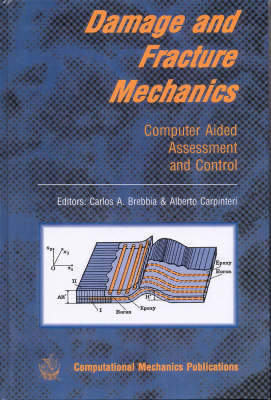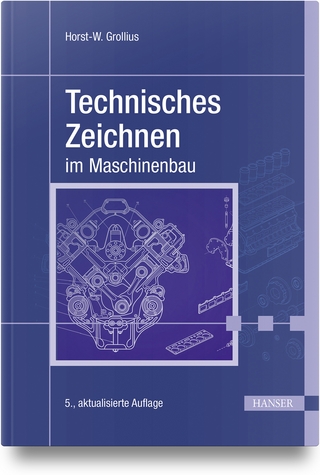
Damage amd Fracture Mechanics
WIT Press (Verlag)
978-1-85312-583-6 (ISBN)
- Titel ist leider vergriffen;
keine Neuauflage - Artikel merken
This books contains most of the papers presented at the fifth International Conference on Computer Aided Assessment and Control of Localized Damage and Fracture Mechanics, which took place in Bologna, Italy in June 1998. The latest in a highly successful series, the meeting was organised by the Wessex Institute of Technology and the Dipartimenti di Ingeneria Strutturale of the Politecnico di Torino in Italy with the sponsorship of the International Society for Boundary Elements (ISBE). Featuring details of the most up-to-date research in the field, Damage and Fracture Mechanics V contains contributions by many leading international scientists. Papers are divided under the following section headings: Fracture Mechanics and Fracture Criteria, Damage Mechanics, Composite Materials, Crack Propagation and Control, Fatigue, Creep and High-Temperature Problems, Microstructural and Micromechanical Modelling, Environmental Effects, Residual Stresses and Experimental Methods.
SECTION 1: FRACTURE MECHANICS AND FRACTURE CRITERIA Crack propagation simulation in a plate with cracks and an inclusion; Thermal analysis for cracks near interfaces between piezoelectric materials; Crack line field for mode II crack under small scale yielding in an elastic-perfectly plastic solid; Analysis of interaction between interface cracks and internal cracks using singular integral equations of the body force method ; Ductile rupture at low triaxialities: influence of the inclusions upon void growth; A micro- and macro-approach to the fracture of high-strength steel notched bars. SECTION 2: DAMAGE MECHANICS Localised fatigue damage of Carrara marble; Crack-induced conditions: extended Neuber method coupled to damage mechanics; Damage mechanics analysis of a weld steel microstructure using testing and macro and micro level simulations; Augmented lagrangian variational formulation for a plastic-hardening-damage coupled model; Effects of weld-induced circumferential imperfections on the buckling of cylindrical thin-walled shells; Stochastic analysis of localised damage for short fatigue cracks; Finite element non-linear analysis of reinforced concrete beams with openings. SECTION 3: COMPOSITE MATERIALS The bridged edge crack for a fibre reinforced solid with localized damage; Application of a non-local failure criterion to a crack in heterogeneous media; Examination of the rule of mixture for effective Young modulus of composites using FEM analysis; The driving force on a crack approaching an interface of materials with different yield stresses: the effect of the interlayer thickness; On the finite element analysis of the influence of the local structural damage of the multilayered thick plate material to the stress distribution; The constraint effect and the void configuration in SiC particle reinforced aluminium alloy; Interlaminar fracture of laminates with through-thickness reinforcement; Equivalent elastic and shrinkage composite properties and some applications to hardening of tooth filling material; Evaluation of interfacial strength of plasma-spray ceramic coating films by tensile test. SECTION 4: CRACK PROPAGATION AND CONTROL Material and crack discontinuities: application of an element free augmented lagrangian method; Effect of stress ratio on the growth rate of a small crack; Cyclic fatigue crack growth characteristics for SiC whisker reinforced alumina matrix composite; Measurement of crack length and profile in thick specimens and components using modified DCPD method; Usage of continuous approach in determination of structure modification; Using novelty detection to diagnose damage in structures with time-varying parameters; Numerical methods for the strain-softening response of concrete in uniaxial compression. SECTION 5: FATIGUE Convenient stress concentration formula useful for any shape of notch in a round test specimen; Technological provision of endurance for aircraft engine compressor disks from nickel base superalloy; Fatigue life and cyclic elastic-plastic strain behaviour ahead of notch of notched specimen under cyclic plane bending; Prediction of fatigue thresholds of cracked components under mean stresses; Tribological damage of high speed rotor safety bearings - testing and simulation; Effects of extremely shallow partial notch on fatigue strength of 0.45per cent C steel. Numerical simulation of layered specimens behaviour under thermal shock conditions; Influence of local damage on the creep behaviour of high speed steels; Local plastic deformation behaviour around crack tip under cyclic loading; Stress analysis of arbitrarily distributed elliptical inclusions under longitudinal shear loading; Technological hereditary and rupture kinetics of parts from titanium alloys; Stress intensity factors for subsurface fatigue crack growth under contact loading; Fatigue properties of pre-strained structural steels; A functional approach to non-local strength conditions at multiaxial loading. SECTION 6: CREEP AND HIGH-TEMPERATURE PROBLEMS Creep-induced matrix damage in transversely loaded unidirectionally reinforced composites; Creep performance of welded structures at high temperatures; Dynamic stress intensification due to a moving heat source in a thin plate; Study on mechanical factor of grain boundary cavity nucleation under creep-fatigue condition; Deformation behaviour of polycrystalline (IN78LC) and single crystal (SC16) nickel base superalloys under creep-fatigue loading. SECTION 7: MICROSTRUCTURAL AND MICROMECHANICAL MODELLING Three dimensional structure model of damage in brittle polycrystalline materials; Brittle-elastic solids with interacting non-circular pores: stressconcentrations and microfracturing patterns; Plastic flow percolation across a microstructure with pores; The damage work model for the description of ductile failure of steel; Lacunar fractality of the contact domain in a closed rock fracture. SECTION 8: ENVIRONMENTAL EFFECTS Effect of liquid NaK on crack propagation in aluminium alloys; Brittle fracture of cracked solids as affected by surfactants; Chemical resistance of E-glass reinforced polyester composites made by pultrusion; Cell model analyses of the void behaviour under cyclic plastic holding; Influence of vacuum and water on tensile fracture behaviour of aramid fibres; Correlation between microstructure changes by water molecule corrosion and strength characteristics of ZrO2 particle dispersed Al2O3. SECTION 9: RESIDUAL STRESSES In situ monitoring of residual strains in model composites; Analysing effect of residual stresses based on crack closure model for part through fatigue crack growth problems; Influence of residual stresses on the fatigue behaviour of welded beams. SECTION 10: EXPERIMENTAL METHODS Some factors affecting the accuracy of the infrared stress analysis method; Localising a notch in a rod from changes in node positions
| Reihe/Serie | Structures & Materials S. ; v. 1. |
|---|---|
| Zusatzinfo | illustrations |
| Verlagsort | Southampton |
| Sprache | englisch |
| Maße | 155 x 230 mm |
| Themenwelt | Mathematik / Informatik ► Informatik ► Theorie / Studium |
| Informatik ► Weitere Themen ► CAD-Programme | |
| Technik ► Maschinenbau | |
| ISBN-10 | 1-85312-583-0 / 1853125830 |
| ISBN-13 | 978-1-85312-583-6 / 9781853125836 |
| Zustand | Neuware |
| Haben Sie eine Frage zum Produkt? |
aus dem Bereich


